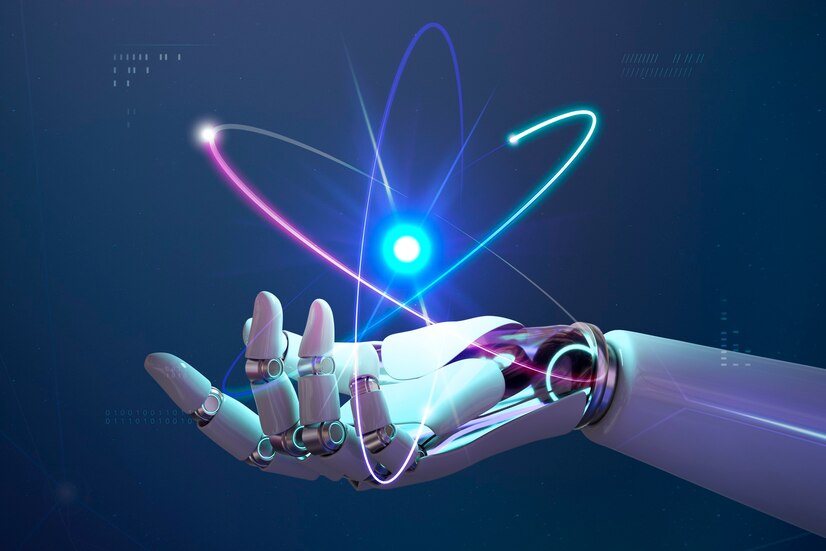The year 2024 is witnessing a remarkable evolution in technology, with several trends poised to transform industries, enhance human experiences, and address some of the world’s most pressing challenges. As we stand on the brink of this technological revolution, it is crucial to understand the top five technology trends that are gaining significant traction among developers and enterprises. These trends are Generative AI, Quantum Computing, Edge AI, Extended Reality (XR), and Sustainable Technology. Each of these trends is set to redefine the way we live, work, and interact with the world. Let’s delve deeper into these exciting developments.

1. Generative AI: The New Frontier of Artificial Intelligence
What is Generative AI?
Generative AI refers to artificial intelligence systems that can generate new content, including text, images, music, and even videos, by learning from existing data. Unlike traditional AI, which primarily focuses on analysis and prediction, generative AI creates original outputs that mimic human creativity.
Key Developments in Generative AI
Advanced Language Models: Generative AI models like GPT-4 have become incredibly sophisticated, capable of producing human-like text that is contextually relevant and coherent. These models are revolutionizing content creation, customer service, and personalized marketing.
Creative Applications: Artists, designers, and entertainers are leveraging generative AI to create unique artworks, animations, and designs. The entertainment industry is particularly benefiting from AI-generated scripts, characters, and entire virtual environments.
Enhanced Personalization: Businesses are using generative AI to deliver highly personalized experiences to their customers. This includes generating tailored recommendations, creating customized marketing messages, and even designing personalized products.
Impact on Developers and Enterprises
For developers, generative AI offers new avenues for creating innovative applications that can learn and adapt. Enterprises are using it to gain insights from vast datasets, automate creative processes, and enhance user experiences. As generative AI continues to evolve, it will drive further innovation and efficiency across various domains.
2. Quantum Computing: Revolutionizing Computation
What is Quantum Computing?
Quantum computing is a type of computation that takes advantage of quantum mechanics to process information in ways that classical computers cannot. Quantum computers use qubits, which can represent and process multiple states simultaneously, leading to exponentially greater processing power.
Key Developments in Quantum Computing
Quantum Supremacy: Quantum computers are achieving milestones that demonstrate their superiority over classical computers in solving specific complex problems, such as optimization tasks and molecular simulations.
Commercial Applications: Industries such as finance, pharmaceuticals, and materials science are exploring quantum computing for its potential to revolutionize areas like cryptography, drug discovery, and material design.
Quantum Cloud Services: Leading tech companies are offering quantum computing as a cloud service, making this powerful technology accessible to a broader range of researchers and developers.
Impact on Developers and Enterprises
Quantum computing is unlocking new possibilities for solving previously intractable problems. Developers are learning to create quantum algorithms, while enterprises are exploring how quantum solutions can provide competitive advantages. The potential applications of quantum computing are vast, promising to revolutionize industries from healthcare to logistics.
3. Edge AI: Bringing Intelligence to the Edge
What is Edge AI?
Edge AI involves running AI algorithms on edge devices—such as smartphones, IoT devices, and autonomous vehicles—rather than in centralized data centers. This approach reduces latency and bandwidth usage, making real-time data processing possible at the source.
Key Developments in Edge AI
Real-Time Processing: Edge AI enables immediate data processing and decision-making, which is crucial for applications like autonomous driving, industrial automation, and smart cities.
Privacy and Security: Processing data locally on edge devices reduces the need to transmit sensitive information to the cloud, enhancing privacy and security.
Improved Efficiency: Edge AI reduces the load on central data centers and minimizes latency, leading to more efficient and responsive systems.
Impact on Developers and Enterprises
Developers are building AI models optimized for edge devices, leading to more responsive and efficient applications. Enterprises are deploying edge AI to enhance operational efficiency, improve customer experiences, and reduce costs. Edge AI is particularly valuable in scenarios where real-time decision-making is critical, such as in healthcare monitoring and industrial IoT.
4. Extended Reality (XR): Merging Physical and Virtual Worlds
What is Extended Reality?
Extended Reality (XR) encompasses Virtual Reality (VR), Augmented Reality (AR), and Mixed Reality (MR). XR technologies blend the physical and digital worlds, creating immersive experiences that enhance how we interact with our environment and each other.
Key Developments in XR
Immersive Experiences: XR technologies are providing more immersive and interactive experiences in gaming, entertainment, and education. VR is offering fully immersive digital environments, while AR overlays digital information onto the physical world.
Enterprise Adoption: Businesses are using XR for various applications, including training, remote collaboration, and product visualization. AR, for example, is being used for on-site maintenance and repair guidance, improving efficiency and accuracy.
Healthcare Applications: XR is making significant strides in healthcare, being used for medical training, patient treatment, and mental health therapy. It offers innovative ways to improve outcomes through immersive simulations and real-time guidance.
Also read
Impact on Developers and Enterprises
Developers are pushing the boundaries of XR to create sophisticated applications that provide immersive and interactive experiences. Enterprises are leveraging XR to enhance training programs, improve customer engagement, and innovate in product development. The potential of XR to transform various sectors is immense, offering new ways to visualize, interact, and learn.
5. Sustainable Technology: Driving Green Innovation
What is Sustainable Technology?
Sustainable technology focuses on reducing environmental impact and promoting green practices through innovative solutions. This includes energy-efficient technologies, renewable energy sources, and sustainable manufacturing practices.
Key Developments in Sustainable Technology
Green Data Centers: Companies are investing in energy-efficient data centers powered by renewable energy sources to reduce carbon footprints. Innovations in cooling systems and power management are making data centers more sustainable.
Sustainable Manufacturing: Technologies like 3D printing and the circular economy are promoting sustainable manufacturing practices. These innovations reduce waste, minimize resource consumption, and enable recycling and reuse of materials.
Climate Tech: Climate tech innovations, such as carbon capture, renewable energy solutions, and smart grids, are addressing the challenges of climate change. These technologies aim to reduce greenhouse gas emissions and promote sustainable living.
Impact on Developers and Enterprises
Developers are creating technologies that support sustainability goals, such as energy-efficient software and smart energy management systems. Enterprises are adopting sustainable practices to meet regulatory requirements, reduce costs, and enhance their corporate social responsibility (CSR) profiles. The push for sustainability is driving innovation and fostering a new wave of green technologies.

Conclusion
The top technology trends of 2024—Generative AI, Quantum Computing, Edge AI, Extended Reality, and Sustainable Technology—are shaping the future of innovation. These trends are driving advancements across various industries, offering new opportunities for developers and enterprises alike. As these technologies continue to evolve, they will redefine how we live, work, and interact with the world, leading to a more connected, intelligent, and sustainable future.